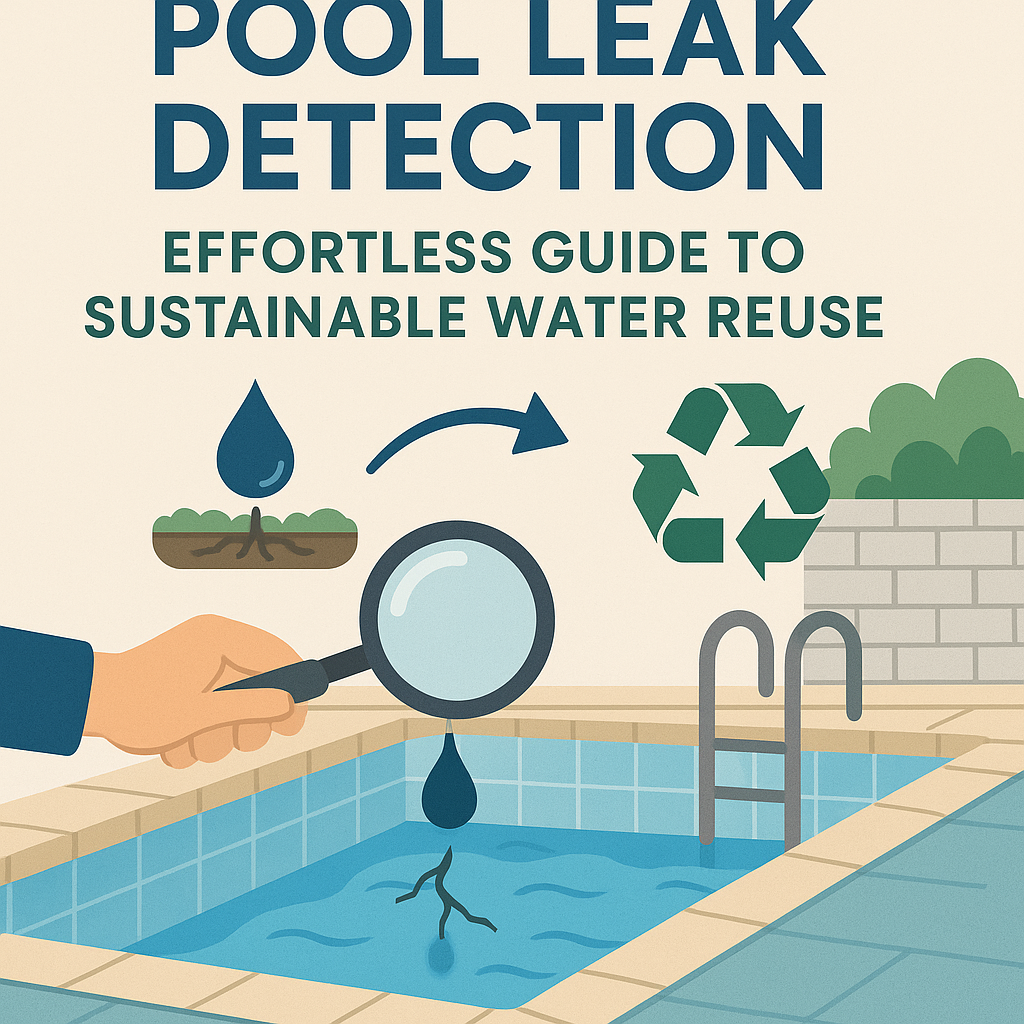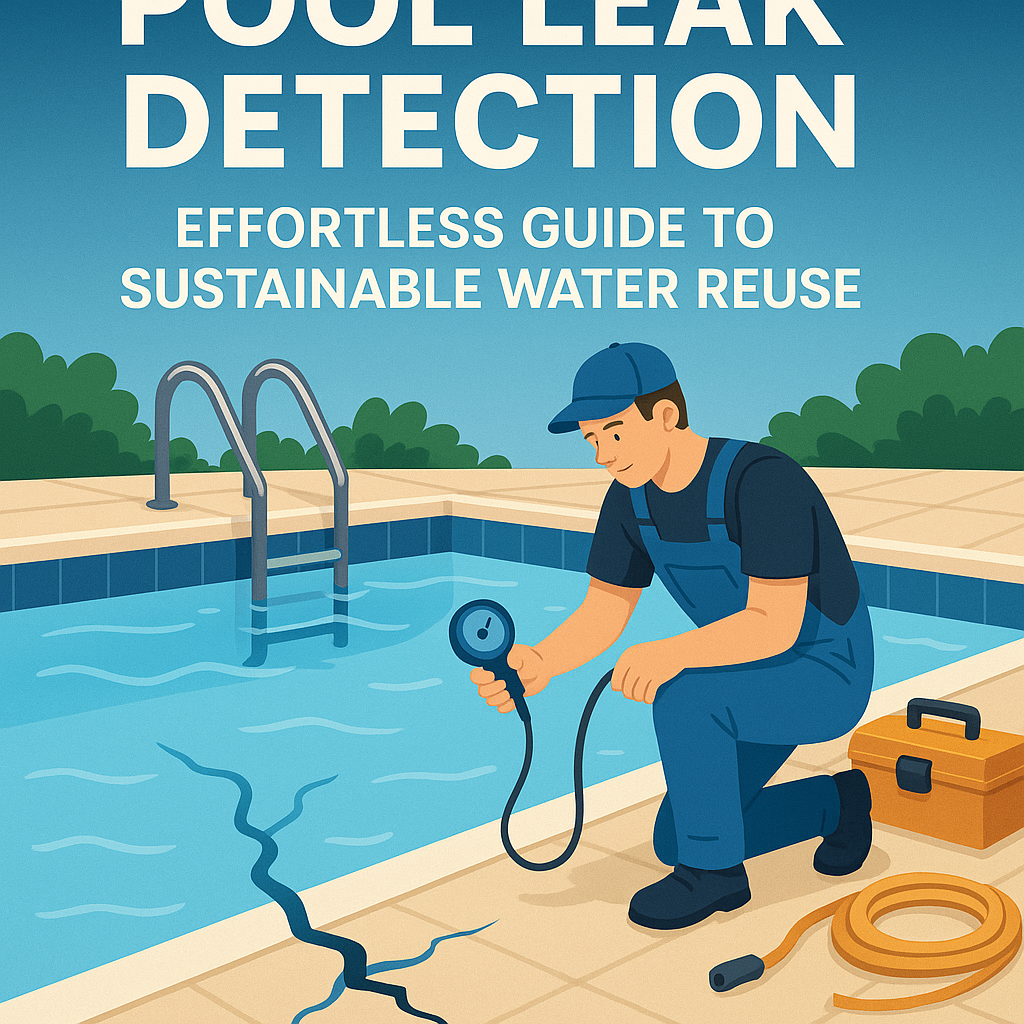Pool leak detection is an essential part of pool maintenance. Especially in a world where water preservation is increasingly important, even a small leak from your swimming pool is undesirable. In this guide, we bring you an effortless journey through pool leak detection and repair, adopting sustainable strategies for water reuse along the way. Our aim is to turn you into an expert in pool leak management, understanding the how, why, and where, as well as the best response measures.
Mastering the Art of Pool Leak Detection

How do you know your pool is leaking? Pool water levels do not remain consistent. Evaporation and regular use can cause the level to decrease. However, a dramatic drop might indicate a leak.
The bucket test offers a quick and easy method for pool leak detection. Fill a bucket with water and mark the water level inside and outside. Place it on a pool step and compare the water loss inside and outside the bucket after 24 hours.
Another sign of a leak is cracks. Pool materials can crack, especially in extreme temperatures. Check for cracks in the pool shell, around fittings, or in the plumbing system.
Wet spots around the pool area or water-soaked soil may also suggest a leak.
Effective Pool Leak Repair
After successful pool leak detection, the next step to consider is pool leak repair. Addressing leaks not only prevents water wastage but it also avoids more extensive damages and higher costs. There are different types of pool leaks and each requires a specific repair approach.
If your pool filters, pumps, or pipes show signs of leaking, you may need to replace the affected parts. For minor leaks in the pool shell, like the vinyl liner or fiberglass, a patch kit might work well. Larger cracks or leaks may necessitate professional help. It’s essential to consult a pool maintenance expert to accurately diagnose and repair complex leaks.
The Importance of Regular Pool Maintenance
Regular pool maintenance is crucial in preventing leaks. Ignoring minor maintenance tasks could result in significant leaks down the line. Regular maintenance consists of checking for signs of wear and tear, cleaning, and optimising chemical levels.
Cleaning and checking your pool filters regularly can help ensure smooth water flow and prevent possible damages that can cause leaks. Maintaining balanced pool chemistry is also important. Poor chemical balance can cause corrosion, which could lead to leaks. Regular checks and timely interventions are therefore an integral part of pool maintenance.
Sustainable Water Reuse Practices
After mastering pool leak detection and repair, let’s shift our focus towards sustainable water reuse. Swimming pools use a lot of water, but there are ways to minimize the impact on our water resources.
Firstly, consider investing in a pool cover. This simple tool dramatically reduces the rate of evaporation, preserving your pool water.
Implementing a rainfall harvesting system can also help. Connect your pool area with rainwater barrels, and use this harvested water to fill up your pool when required.
Additionally, you can recycle backwash water. Backwashing is often a part of pool maintenance, yet it uses a significant amount of water. By investing in a backwash water-saving device, one can recycle this water back into the pool, significantly reducing wastage.
Lastly, ensure your pool is energy-efficient. Leaks not only waste water but also increase your energy usage. By keeping your pool leak-free, you maintain an energy-efficient system.
To sum it up, pool leak detection is an essential aspect of pool ownership. Active steps towards preventative maintenance can save both water and money. Once you’ve honed your leak detection and repair skills, sustainable water reuse becomes an easily attainable goal. Remember, leaks are not just about wasted water; they can point to underlying issues in your pool system. Hence, regular maintenance and an approach encompassing sustainability can help you enjoy your pool for many years to come, with minimum negative impact on our precious water resources.


